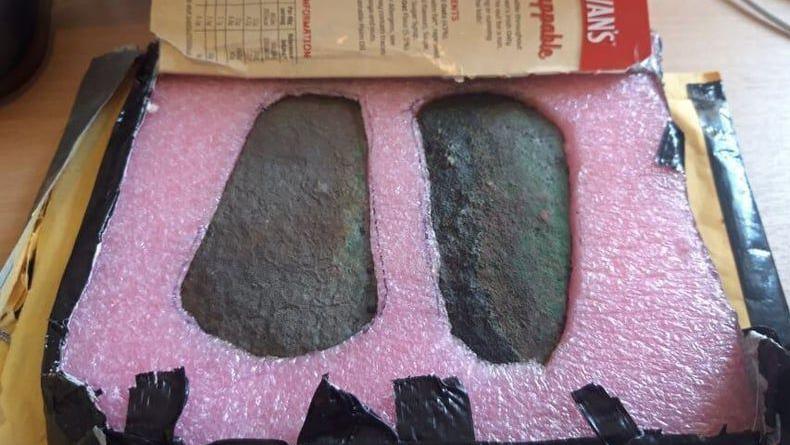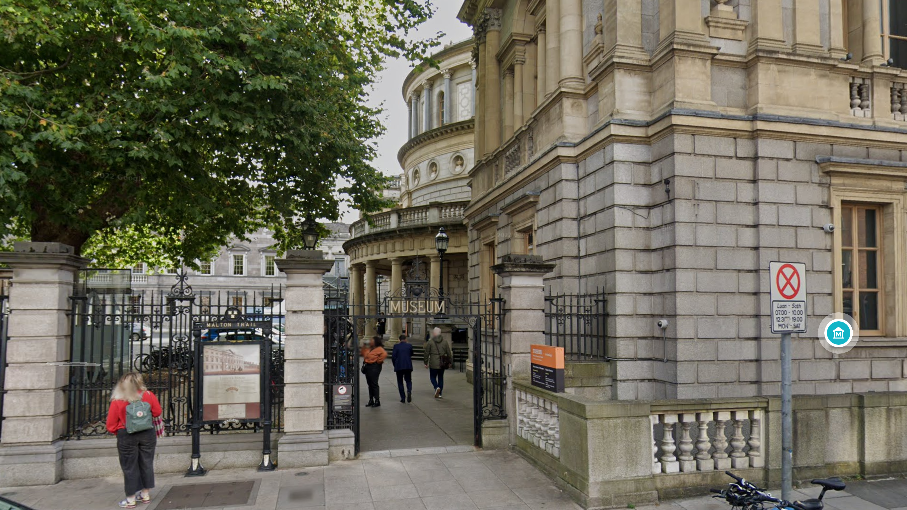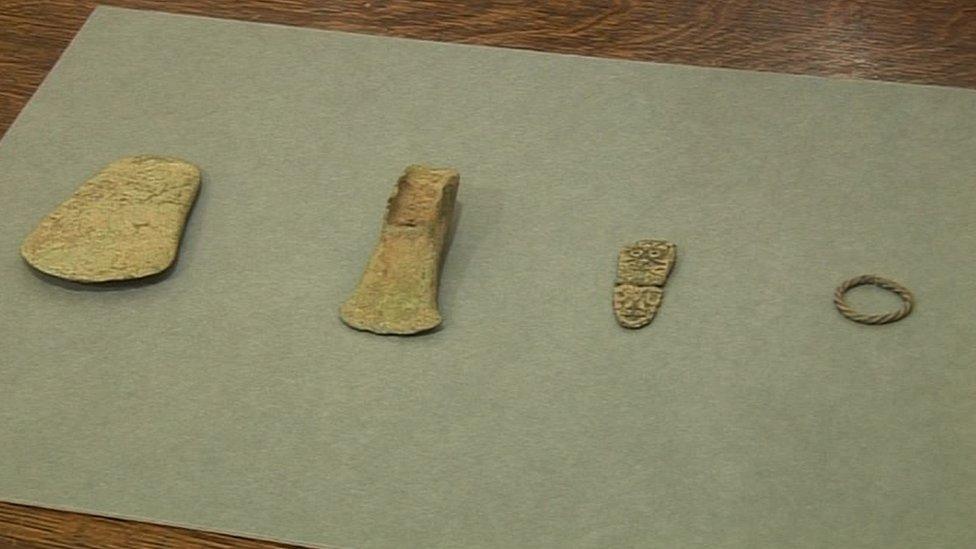Mystery as 4,000-year-old axe-heads sent to museum

The Bronze Age axe-heads appear to have been packaged using a flapjack box
- Published
Two axe-heads, which are believed to be more than 4,000 years old, have been sent to the National Museum of Ireland by an anonymous letter writer.
Staff at the museum described them as a "significant archaeological find".
They are now trying to trace the sender to find out more about the artefacts.
The letter stated that the axe-heads were discovered in County Westmeath using a metal detector.
A photo released by the museum appears to show the Bronze Age items packaged into a flapjack box.
Staff said the artefacts were "thoughtfully packed in foam cut-outs and cardboard, ensuring their safe arrival".
They added the sender "expressed a desire for the axe-heads to be conserved by the museum" but said the letter did not provide any further specifics about their origin.
Staff have now appealed to the sender to contact them again, saying it is "crucial" that archaeological experts are informed of the the exact location of the find.
"We are thrilled about the discovery of these Early Bronze Age axe-heads," said Matt Seaver, Assistant Keeper of Irish Antiquities at the museum.
But he added that to "truly understand their significance, we need to know where they were found".
The museum explained that knowing the context of archaeological discoveries helps experts "piece together ancient settlement patterns and cultural practices".
Fines and imprisonment

The National Museum of Ireland's Archaeology section is on Kildare Street in Dublin
Staff used their appeal to the sender to remind the general public about the law on metal detecting., external
It is illegal to use a metal detector to search for archaeological objects anywhere in the Republic of Ireland, unless you have written permission from the government.
Those convicted of the offence can face a fine ranging to more than €63,000 (£53,000).
They can also be sentenced to up to three months in prison instead of - or sometimes in addition to - the large fine.
The museum explained those "severe penalties" are in place because unauthorised metal detecting can cause "serious damage to Ireland’s archaeological heritage".
However, appealing to the sender to get back in touch, staff said information about the discovery of the axe-heads would be "treated with the utmost confidentiality and used solely to verify the find location and its circumstances".
The museum is based across four sites but its archaeology section is located in Dublin's Kildare Street.
The flat axe-heads were received by staff at the end of June.
Archaeological experts estimate that they date from some time between the years 2150 and 2000 BC.
Mr Seaver said it is the role of National Museum of Ireland to "preserve these treasures for everyone in the State".
He also reminded members of the public that it is their "legal duty to report the discovery of archaeological objects".
A similar incident happened in 2016 when anonymous packages containing Bronze Age axes and Viking jewellery were sent to the Kildare Street site.
Related topics
- Published28 December 2016
